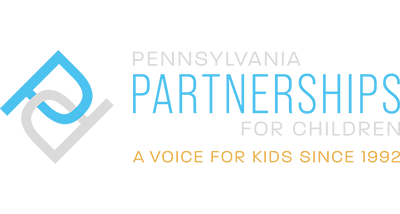Pennsylvania Partnerships for Children (PPC) today released its annual State of Child Welfare report, a five-year snapshot on child well-being that this year shows increased public awareness of child abuse and neglect and positive improvements in mandated and permissive reporter requirements has helped fuel the highest recorded number of referrals in the state to date. And, while the data show counties have provided increased supportive in-home services to keep families intact, the rate of children entering out-of-home care also has continued to rise. Of the children placed in out-of-home care, too many of them, especially older foster youth, are not being placed with kin.
“A core mission of child welfare agencies is to preserve families whenever possible by offering supports and services,” said Kari King, President and CEO of PPC. “However, work still needs to be done to improve the outcomes of children and families involved in the child welfare system.”
King noted that as a result of increased referrals, there is an increased need for services to alleviate safety and risk factors by keeping families intact. Child placement is always a difficult decision for child welfare agencies, but when it is truly necessary, it is important that children are placed in the most family-like setting. Less than half of the children placed in a family-based setting are placed with a relative. And, transition age youth – those who are 13 years of age and older – make up one-third of the foster care population and are often the most difficult to place in a family-based setting, and, more frequently, reside in less-than-ideal group settings.
According to the 2019 State of Child Welfare:
- Between 2013 and 2017, the state saw a 76 percent increase in child protective services referrals, and between 2015 and 2017 a 24 percent increase in general protective services, the highest recorded to date.
- Since 2014, the rate of children served in foster care has increased by 13 percent, however, from 2017 to 2018, the rate per 1,000 children has remained the same.
- Efforts to increase placement in family-based settings continues to increase; however, almost half of those youth are placed in non-relative foster homes.
- While rates of older youth entering foster care have decreased, they make up almost 49 percent of re-entry into foster care, which means they return home and re-enter the system within one year.
“The foster care system is costly, and we know that children thrive when they are with someone they know, trust and have a well-established connection with,” King said. “Further policy changes should be aimed at refining current practices for identifying, connecting and supporting kinship caretakers.”
PPC championed Act 89 of 2018 establishing the Kinship Navigator Program in Pennsylvania, which will allow kin to safely and competently care for children without the need for formal child welfare intervention. It is hoped that this program will be up and running by summer, but formal announcement about the selection of the provider and timeline for implementation has yet to occur.
According to “Keeping Kids in Families: Trends in Placement of Young People in Foster Care in the United States,” a new data snapshot released this week by the Annie E. Casey Foundation as part of its KIDS COUNT® project, 84 percent of the foster care population in Pennsylvania is either in a non-relative, adoptive or kinship home. Additionally, upon a child’s first placement, 83 percent enter such a setting initially.
“The State of Child Welfare is our contribution to improving Pennsylvania’s child welfare system by not only providing county-level data, but also statewide and geographic trends,” King said. “Our goal is for this data and research to be used to inform advocacy efforts and support initiatives that better serve children and families.”
The State of Child Welfare is available at www.papartnerships.org/report/report-2019-state-of-child-welfare/.
For more information about “Keeping Kids in Families,” visit www.aecf.org.
#####
